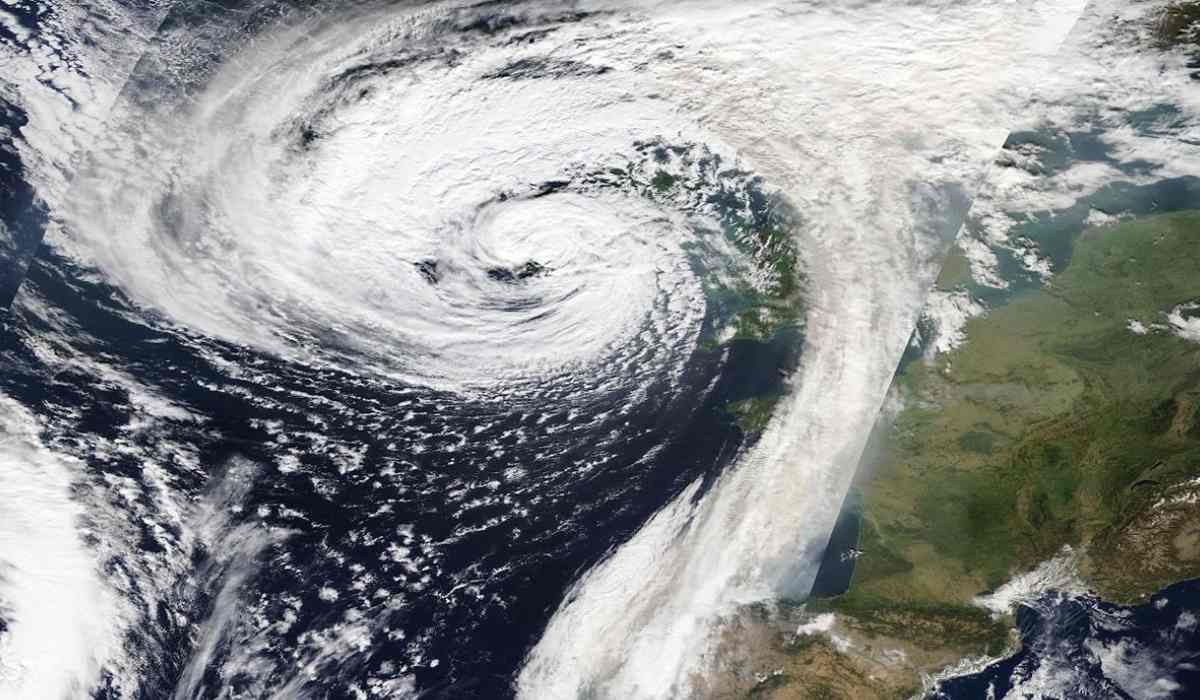
In meteorology and climatology there are some phenomena caused by pressure differences in conjunction with the Earth's rotation. One of them is the anticyclone. It is an area of high pressure in which the atmospheric pressure is higher in one area than in the entire surrounding area. The anticyclone is of great importance for weather and weather forecasting.
In this article we are going to tell you everything you need to know about what an anticyclone is, its characteristics and how it is formed.
Earth's meteorological phenomena

Many changes and movements in the atmosphere of our planet are determined by the movement of the earth and the irregular characteristics of the earth's surface. Earth's atmosphere is in constant motion due to the fluctuation of hot air flowing from the tropics to the poles and then back to the equator from the poles to cold air. The atmosphere closest to the earth's surface is called the troposphere, which contains the air we breathe and the place where the meteorological phenomena that determine the earth's climate occur.
The great air currents, the air that fluctuates in the world's oceans, it can undergo physical changes throughout its trajectory and the environmental factors that surround it. For example, these changes can be in temperature or humidity, and depending on the characteristics of the air, it will clear up more or less and will remain more or less in the same area.
The rotation of the earth causes the air flowing through the troposphere to bend, that is, the air mass receives a force that deflects its path. This force, commonly known as the Coriolis effect, means that the rising air column in the northern hemisphere will contract in a clockwise direction (clockwise), while the air column in the northern hemisphere south will drift in the opposite direction (counterclockwise).
This effect not only produces a very important movement in the air, it also produces a very important movement in the body of water. This effect increases when it is close to the equator, because the area of the earth is larger and it is also the area furthest from the center of the earth.
What is an anticyclone

An anticyclone is an area of high pressure (above 1013 Pa) in which the atmospheric pressure is higher than the pressure of the surrounding air and increases from the periphery towards the center. It can usually be related to typical stable weather, clear skies, and sunshine.
The anticyclone column is more stable than the surrounding air. In turn, the air that falls downwards creates a phenomenon called sinking, which means that it prevents the formation of precipitation. Of course, it must be taken into account that the way in which the air descends will vary depending on the hemisphere in which it is located.
These anticyclonic airflows are easier to develop in summer, which further aggravates the dry season. Unlike cyclones, which are easier to predict, they often have an irregular shape and behavior. Broadly speaking, anticyclones can be divided into four groups or categories.
Types of anticyclone

There are several types of anticyclones depending on their characteristics. Let's see what they are:
- Subtropical Atlas
- Continental Polar Atlases
- Atlas between series of cyclones
- Atlas produced by the invasion of polar air
The first is the subtropical atlas, the result is a large and slender anticyclone, located in the subtropical zone, generally static or very slow moving. In this group, it is worth mentioning the anticyclone of the Azores, which turned out to be a very important dynamic anticyclone, which regulates the climate of the region and the storms that will occur during cold periods.
The second is the anticyclone called Continental Polar Atlas, which forms and moves on the continent closest to the north in winter until they reach warm waters and are absorbed by the subtropical anticyclone.
The third group of anticyclones is an atlas between a series of cyclones, they are small in size and, as their name suggests, appear between cyclones. The last anticyclone group is an atlas created by the intrusion of polar air, as its name suggests, cold air absorbs heat from warmer waters and transforms into a subtropical anticyclone a few days later.
Differences between anticyclones and storms
It is very common to confuse an anticyclone with a storm since storms are also called a cyclone. However, they are the opposite. To see the main difference between these two meteorological phenomena, let's see what the definition of storm.
Storms are slightly divergent air that tends to rise. It is an area where the atmospheric pressure is lower than the surrounding area. The upward movement of the air favors the formation of clouds and, therefore, also favors the production of precipitation. In essence, gusts of wind are fed by cold air and their duration depends on the amount of cold air it carries. These types of air masses are very unstable and form and move rapidly.
In the northern hemisphere, the storm rotates counterclockwise. The weather that brings these air masses is unstable, cloudy, rainy, or stormy, and it sometimes snows in winter. There are several types of storms:
- Thermal: when the temperature is much higher than room temperature, the air rises. Due to overheating, violent evaporation will occur and then condensation will occur. Due to these types of storms, very abundant rainfall has occurred.
- Dynamics: It is produced by air masses that rise to the top of the troposphere. This movement is due to the pressure that the cold air mass has and moves.
I hope that with this information you can learn more about what an anticyclone is and what its characteristics are.